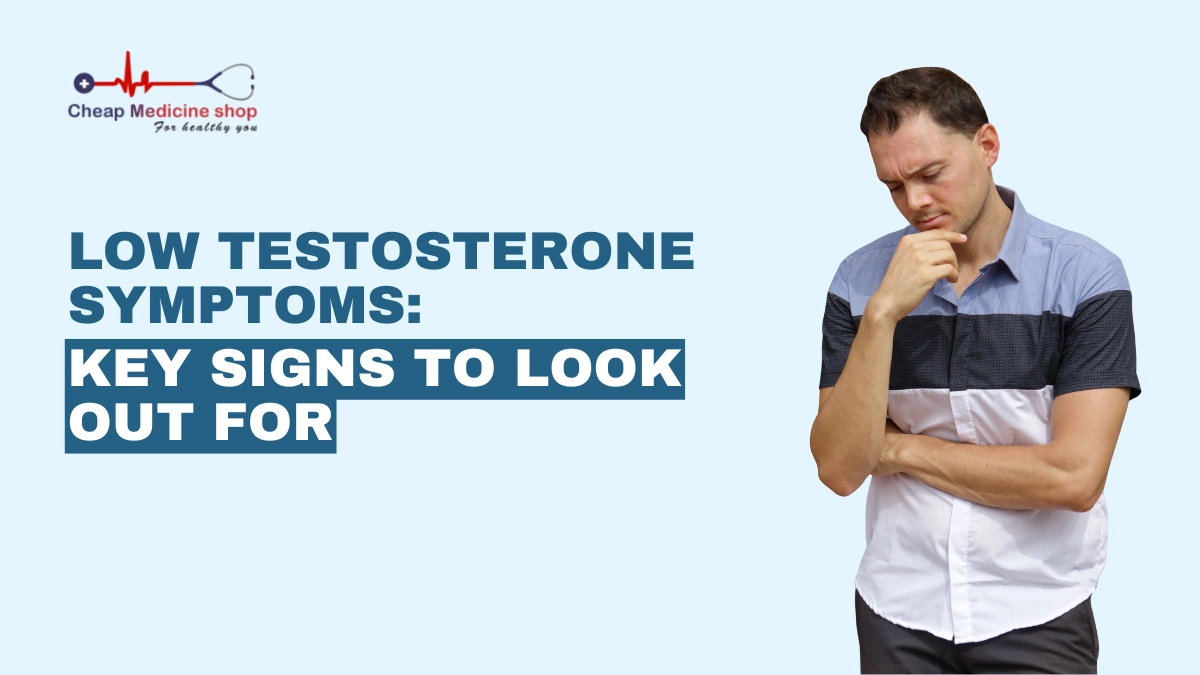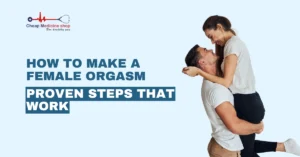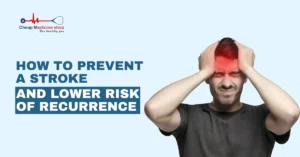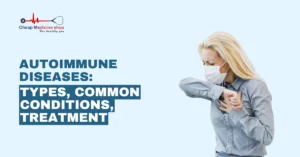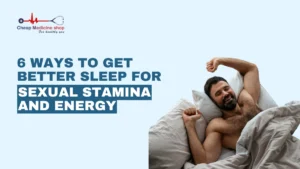Testosterone is essential for muscle growth, energy, sexual health, and overall well-being in both men and women. Though commonly linked to men, women also need healthy Testosterone levels to support mood, sex drive, and metabolism.
When testosterone levels are affected by dropping below normal, it can lead to several physical, emotional, and cognitive issues. These Low Testosterone symptoms often develop gradually and are sometimes mistaken for other conditions or simply aging.
In men, Low Testosterone symptoms include fatigue, low sex drive, Erectile Dysfunction (ED), and muscle loss. Women may also experience symptoms such as low libido, mood swings, and decreased stamina. The symptoms can impact quality of life if not appropriately addressed, whether caused by aging, medical conditions, or lifestyle factors.
This article gives a rundown of the signs and symptoms of low Testosterone in men and women to know when it may be time to seek help.
Common signs and symptoms of Low Testosterone
Low Testosterone can have an impact on various systems in the body, leading to physical, emotional, and sexual symptoms. Some signs are easily detectable, but others can be subtle and develop gradually.
Here are some common Low Testosterone symptoms that individuals may experience:
Save up to 90% on your medicine bills
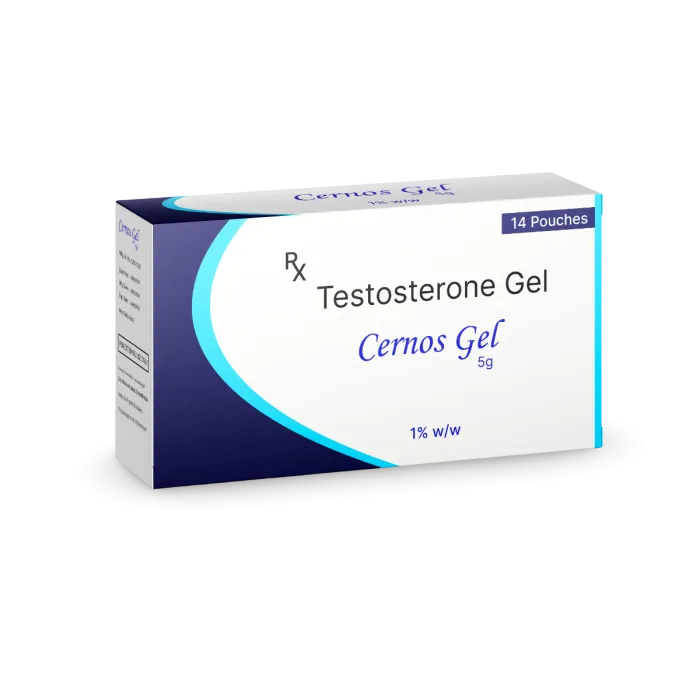
Cernos Gel 1%w/w

Cernos 40 Mg Soft Gelatin Capsule

Sustanon 250 Injection

Carmel Organics Ashwagandha Extract Tablets
Reduced muscle and bone mass
Testosterone is crucial for building and maintaining both muscle and bone strength. Low levels might lead to decreased muscle size and strength, making physical activities more difficult. Over time, bones can also weaken, increasing the risk of Osteoporosis and fractures.
Diminished energy and fatigue
People with low Testosterone often feel drained and lack the energy they once had, even after adequate sleep. This persistent fatigue can affect work, daily routines, and motivation for exercise or social activities.
Increased body fat
A drop in Testosterone may change how the body stores fat and uses energy, often resulting in weight gain, particularly around the abdomen. This shift is partly due to the loss of muscle mass, which naturally burns more calories, and changes in metabolism.
Hair loss
Testosterone helps maintain hair growth on the scalp and body. Low Testosterone can lead to thinning hair, balding, or loss of body hair. For some, this may also include reduced beard growth.
Reduced libido
A sudden loss of sex drive or interest in sexual activity is a common symptom of Low Testosterone. Testosterone is a key element of libido in both men and women. People may notice less frequent sexual thoughts, desires, or activities.
Sleep disturbances
Low Testosterone can cause sleeping problems like trouble falling asleep, frequent waking up, and poor sleep quality. Testosterone is involved in maintaining healthy sleep, and low levels can interfere with this balance, leading to poor sleep quality and daytime tiredness.
Mood changes
Low Testosterone impacts emotional well-being and mental health, potentially leading to increased irritability, mood swings, Anxiety, and symptoms of Depression.
Symptoms of Low Testosterone in men
Low Testosterone levels (Male Hypogonadism or Low T) can cause various symptoms in men that can lead to disruptions in sexual function, energy levels, mood, physical conduct, and overall quality of life. These symptoms include:
Erection issues
Testosterone plays a role in achieving and maintaining erections. Low T levels may cause difficulties in getting or keeping an erection, although Erectile Dysfunction can have many causes besides Testosterone deficiency.
Testicle Shrinkage
Testosterone helps keep the testicles healthy and working correctly. When there isn’t enough of it, the testicles get smaller because they aren’t being stimulated enough. Thus, a man with not enough Testosterone levels may notice a decrease in testicular size unrelated to cold temperatures. The scrotum might also feel softer than usual.
Low production of semen
Testosterone helps the body make semen, which carries sperm during ejaculation. When Testosterone is low, less semen is made, which will result in a noticeable reduction in ejaculation. This decrease in semen output can also lead to fertility problems.
Hot flashes
Low Testosterone levels can cause men to experience hot flashes. A drop in Testosterone can affect the brain’s ability to control body temperature, leading to sudden feelings of heat.
Symptoms of Low Testosterone in women
Women naturally produce much lower counts of Testosterone than men. However, this hormone remains essential for libido, mood regulation, bone health, and female energy levels. A drop can have an impact on everyday functioning. Symptoms that signal low T levels in women are:
Abnormal menstrual cycles
Testosterone helps balance hormones for regular periods or Menstruation. When it’s too low, cycles can become unpredictable or even stop. Checking your hormone levels is good if you notice unusual period patterns.
Genital sensitivity
Low Testosterone in women can cause a lack of feeling or sensitivity in the genital area. This can make it harder to feel sexual pleasure, have an orgasm, or stay lubricated during sex. As a result, sexual satisfaction may go down.
Anemia
Testosterone helps the body make Red Blood Cells (RBCs), so you might feel tired, weak, pale, dizzy, or short of breath when it’s low. A study published by JAMA Internal Medicine shows women over 65 with reduced Testosterone levels tend to have lower hemoglobin levels, making them more susceptible to Anemia.
Conclusion
Low Testosterone affects millions of people worldwide. When levels fall below normal, the changes it causes disrupt one’s day-to-day life, as the symptoms can manifest as physical, emotional, and psychological.
From decreased libido and erectile issues in men to genital sensitivity and abnormal menstrual cycles in women, it is essential to be informed about Low Testosterone symptoms, as early recognition is crucial to take necessary actions.
These symptoms often develop slowly and may be mistaken for normal aging. But if they start affecting your daily life, it’s essential not to ignore them. Getting your hormone levels checked and treated can help you feel better, stronger, and more like yourself again.
If you experience such symptoms, you should consult a doctor or healthcare professional for the proper treatment.
Also read: Want to know how you can manage these symptoms? Read A Comprehensive Guide to Low Testosterone Treatment

Frequently Asked Questions
Can lifestyle changes help with Low Testosterone?
Yes, lifestyle changes can be essential in improving or supporting Testosterone levels, whether or not medical treatment is needed. Healthy habits are often recommended as first steps and as part of ongoing management for Low Testosterone.
How is Low Testosterone diagnosed?
Low Testosterone is diagnosed by evaluating symptoms, physical signs, and blood test results. The doctor will conduct an exam and order blood tests to check testosterone levels. He will also review your medical history, medications, and lifestyle to rule out other possible factors affecting hormone levels.
What is the most common treatment for Low Testosterone levels?
Testosterone Replacement Therapy (TRT) is the most commonly used treatment for low T levels. It can be administered in various forms, including gels or creams, skin patches, injections, implantable pellets, and oral options. Always consult a healthcare professional before starting any form of treatment.
Can I have Low Testosterone without any symptoms?
Yes, it is possible that you can have Low Testosterone without experiencing any symptoms. Studies, particularly done in men, have shown such a possibility; however, reports of men experiencing low T symptoms are more likely to occur.
Cheap Medicine Shop only refers to credible, authoritative sources for our content. If you’re curious about how we ensure the integrity of our content, we encourage you to read our Content Information Policy.

